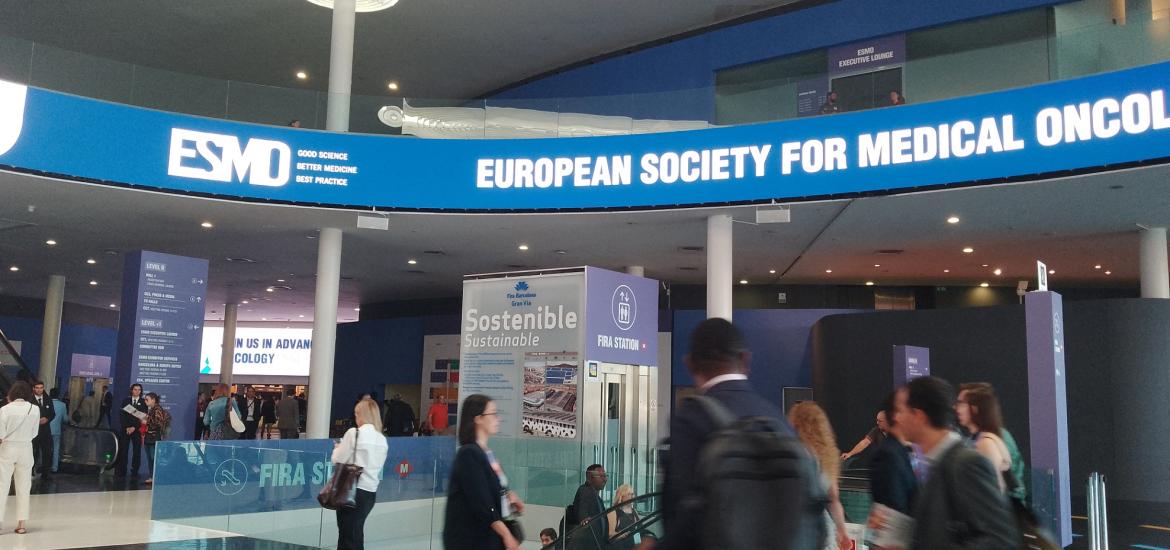
ESMO 2024 – Nuvalent looks beyond its late-line Alkove
Efficacy with the group’s next-gen ALK and ROS1 inhibitors holds up, and first-line use could beckon.
Efficacy with the group’s next-gen ALK and ROS1 inhibitors holds up, and first-line use could beckon.

The targeted oncology specialist Nuvalent has had stock market success based on promising data with its two lead candidates, and it will hope to build on this with more results at ESMO on Saturday that show the projects holding up.
Nuvalent’s $5.7bn market cap might look rich given that its data so far have come in the niches of heavily pretreated ALK and ROS1-positive solid tumours; however, in future the group hopes to target first-line disease – a strategy that was endorsed by the ESMO discussants.
ALK
The first data to be presented at ESMO concerned NVL-655, Nuvalent’s fourth-generation ALK inhibitor. The project is designed to avoid the TRK inhibition that is linked with CNS toxicity, for example with Pfizer’s third-generation Lorbrena.
The results were an update from the first-in-human Alkove-1 trial, which was first presented at the Triple Meeting last year, and spurred a surge in Nuvalent’s share price. The phase 1 portion of the phase 1/2 trial recruited ALK-positive solid tumour patients, mainly those with NSCLC, treated with at least one prior second or third-generation ALK TKI.
Last year Nuvalent reported an ORR of 39% among evaluable 51 patients; now it’s seeing a 38% ORR among 103 subjects across all doses. Response rates in those with baseline ALK resistance mutations were even more impressive.
Evolving dataset from Alkove-1 trial of NVL-655 in previously treated ALK+ solid tumours
| Triple meeting 2023 | ESMO 2024 presentation | |
|---|---|---|
| Cutoff date | 8 Aug 2023 | 15 Jun 2024 |
| N | 93 (91 NSCLC) | 133 (131 NSCLC) |
| ORR | 39% (20/51) | 38% (39/103) |
| ORR in ALK-mutated pts | 54% (15/28) | 52% (30/58) |
| Discontinuation due to TRAEs | 2% | 2% |
Source: ESMO & AACR-NCI-EORTC.
It was also notable that 53% of 17 Lorbrena-naive patients saw a response, versus 35% of 85 subjects who’d previously received the Pfizer drug.
This led the discussant, Professor Jürgen Wolf of University Hospital of Cologne, to suggest that NVL-655 could be a future first-line option. He noted the “excellent” tolerability of NVL-655.
Nuvalent is already looking at earlier lines of therapy in the phase 2 registrational portion of Alkove-1, with a TKI-naive cohort. The group has also previously mentioned plans for a first-line phase 3 trial, although no details are currently available.
ROS1
It was a similar story in ROS1-positive tumours, where Nuvalent is developing zidesamtinib (previously known as NVL-520). Again, this project is designed to avoid TRK inhibition.
The ESMO data came from the phase 1 portion of the phase 1/2 Arros-1 trial, which enrolled late-line ROS1-positive solid tumour patients, again dominated by NSCLC. And again, the response rate is holding up versus an earlier update.
Evolving dataset from Arros-1 study of zidesamtinib in previously treated ROS1+ NSCLC
| Triple Meeting 2022 | ESMO 2024 presentation | |
|---|---|---|
| Cutoff date | 13 Sep 2022 | 1 Jul 2024 |
| N | 35 (34 NSCLC) | 104 (99 NSCLC) |
| ORR | 48% (10/21) | 44% (31/71) |
| Discontinuation due to TRAEs | 0 | 0 |
Source: ESMO & AACR-NCI-EORTC.
And notably, in patients naive to Bristol Myers Squibb’s multi-kinase inhibitor Augtyro, the ORR was 51% (27 of 53 patients). Among patients who’d only received one prior TKI, Pfizer’s Xalkori, ORR was 73% (8 of 11 patients).
If it does come to a first-line battle, zidesamtinib might have a safety benefit. The ESMO discussant, Dr Adrianus Johannes De Langen of Amsterdam University Medical Center, highlighted zidesamtinib’s apparently favourable adverse event profile versus drugs currently approved for ROS1-positive NSCLC, including Augtyro.
With Arros-1’s registrational phase 2 portion also now investigating TKI-naive patients, Nuvalent could see the niche for its assets widen. Whether this promise justifies the group’s market cap is still a big question.
1210













